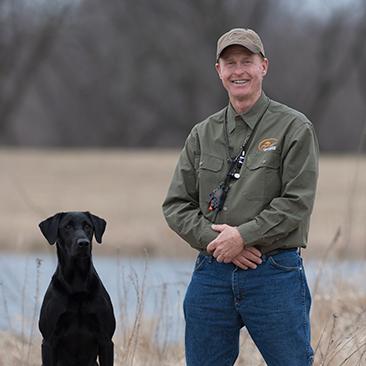
How Tone and Vibe Can Improve Your Upland Bird Hunting
Posted by Tom DokkenA flushing dog that has learned to work at just the right distance in front of hunters is a huge advantage in a pheasant field or grouse covert. “Just the right distance” varies with terrain and personal preference, but I think we can all agree that anytime your dog puts a bird up close enough that you have time to make a good shot without rushing things, you can count that as a success.
Inevitably, even the best retrievers and spaniels will range out farther than you would like. You’ve been there. You’re working your way through a beautiful field of waist-high switchgrass. Your dog is getting excited and its tail is whipping back and forth like a wiper blade at warp speed as its nose vacuums up bird scent. You know the flush is going to happen any second … but it doesn’t. The bird is running, trying to get away from the mayhem so it can flush safely. Your dog follows its instincts and chases in hot pursuit. Suddenly, your 20-yard dog is at 40, and a moment later it’s more like 50 and the next thing you see is a long-tailed rooster gliding over the hill. You never had a chance.
With wild birds being the cagey fowl that they are, you’re not going to win the game every time. However, there’s a super-simple way to at least make sure you’re the one who’s calling the shots and keeping what you can control – your dog – hunting for you rather than letting circumstances dictate its behavior.
I’m talking about silent communication between you and your dog using the vibe and/or tone feature on the SportDOG Brand collar. I think a lot of people overlook the usefulness of this form of communication.
If your dog is collar-conditioned, you’ve likely had to deliver a correction when it got out of range. If you properly introduced your dog to the e-collar and it knows what you expect it do in the field, I’ll presume that when you give your dog an e-collar reminder that means “get back in here,” it changes course and comes back into acceptable hunting range.
Well, a similar concept applies to training your dog to respond to the vibe or tone. (I use tone for hunting situations, but you can do the same thing with vibe.) I train my dogs that a continuous tone (meaning I’m pressing the transmitter button continuously) means I want them to come all the way back to me just the same as if I was blowing a whistle.
As an extension of this idea, I also train them to change directions when I give them a brief tone. What happens is they hear the tone and start to turn back as if they are going to come all the way in, but when the tone stops, they continue hunting in the direction that they turned.
Why do all this? Because quieter is better in bird hunting. Training your dog to respond to the tone eliminates the need for yelling or whistling and therefore alerting every birds within a mile that something’s up. Indeed, the e-collar tone feature is the ultimate silent whistle.
Even if the season is already underway when you’re reading this, you can certainly add this to your bag of hunting tricks. Simply use the tone button in conjunction with your whistle or voice, and then after a few training sessions switch to using the tone only. Most dogs catch on pretty quickly.
Take some time to work on using this handy e-collar feature. It will keep your dog hunting hard at that magical “right distance” and that means more birds in the bag.

Tom Dokken
Northfield, MN
Dokken brings more than 45 years of retriever-training experience to the SportDOG team. He is well known as the inventor of Dokken’s Deadfowl Trainer, which has become standard equipment for retriever trainers everywhere. He is the owner of Dokken Dog Supply and Dokken’s Oak Ridge Kennels, the largest gun dog...
Related Products



